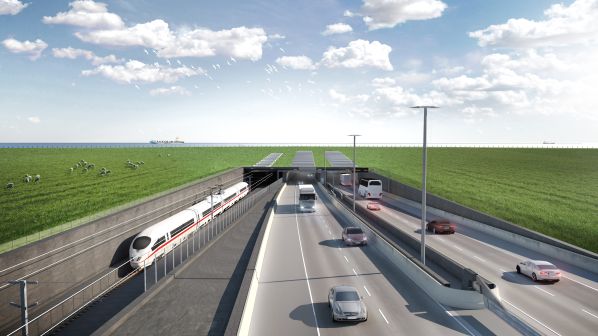THE European Union (EU) has announced that it will provide €5.4bn to co-fund 135 transport infrastructure projects that will form part of the Trans-European Transport Network (TEN-T), with the objective of completing the core TEN-T network by 2030 and the comprehensive network by 2050. The EU says 80% of the funding has been allocated to rail and inland waterway projects.
The EU says that the funding will support economic recovery following the Covid-19 pandemic in all EU member states, while also contributing to the construction of missing transport links across the continent, supporting sustainable transport, improving safety and interoperability, and creating jobs.
The projects were submitted in response to a call for proposals under the EU’s Connecting Europe Facility (CEF) which closed on January 19. Of 399 applications, 135 were selected for CEF funding.
The EU is making a total of €25.8bn available between 2021 and 2027 to co-fund TEN-T projects. Since 2014, CEF has supported over 1030 projects by providing a total of €23bn for the transport sector.
Selected rail projects receiving co-funding under this latest CEF round include the programme to provide a double-track, electrified railway suitable for operation at up to 200km/h between Vienna Stadlau and Marchegg in Austria, as part of Baltic - Adriatic TEN-T corridor. This will receive €28.9m.
In Belgium, infrastructure manager Infrabel is to receive €49.6m to co-fund the deployment of ERTMS Level 2 Baseline 3 on 377km of railway, while Belgian National Railways (SNCB) is to receive €22.5m towards retrofitting 221 EMUs with Level 2 Baseline 3.
Installing ERTMS Level 2 Baseline 3 on 114km of double-track equivalent railway in the Stuttgart area will receive €59.3m. This will be a pilot project implementing the first ERTMS installation in an urban area of Germany.
Under the Stuttgart 21 project, €132m is being provided for upgrading and construction work on the Stuttgart - Wendlingen section.
In Denmark, infrastructure manager Banedanmark’s programme to install ERTMS Level 2 Baseline 3 on 250km of double-track equivalent railway in western Denmark will receive €22m.
The Rail Baltica project to build a standard-gauge railway connecting Estonia, Latvia and Lithuania will receive €352.1m. This project is being taken forward by RB Rail.
In order to remove the missing link in the corridor between Scandinavia and the Mediterranean, a total of €540.5m has been allocated to the Fehmarnbelt tunnel between Denmark and Germany. CEF co-funding is only being provided for rail elements of the project, the EU says.
In Italy, train operator Trenitalia will receive €57.1m to accelerate the deployment of ERTMS Level 2 Baseline 3 on 535 passenger vehicles. Infrastructure manager Italian Rail Network (RFI) has been allocated €75m for new line construction and tunnelling between Fortezza and Ponte Gardena on the southern approach to the Brenner Base Tunnel.
Polish infrastructure manager PKP PLK is to receive €755.1m for the project to upgrade line E65 between Będzin and Katowice Piotrowice.
The EU highlights the €45m in CET funding for an upgrade of the intermodal freight terminal at Haniska pri Košicich in Slovakia, which is to be equipped gauge-changing facilities for movements to and from Ukraine.
In Sweden, infrastructure manager Trafikverket has been allocated €44.8m to co-fund the installation of ERTMS onboard equipment up to 2025.
“We are allocating €5.4bn to projects across Europe that will improve missing infrastructure links, make transport more sustainable and efficient, increase safety and interoperability, and create jobs,” says EU commissioner for transport, Ms Adina-Ioana Vălean.
“These challenging times have reinforced the importance of our EU transport sector and of having a seamless, well connected infrastructure network.”
For detailed data on rail projects around the world, subscribe to IRJ Pro.

